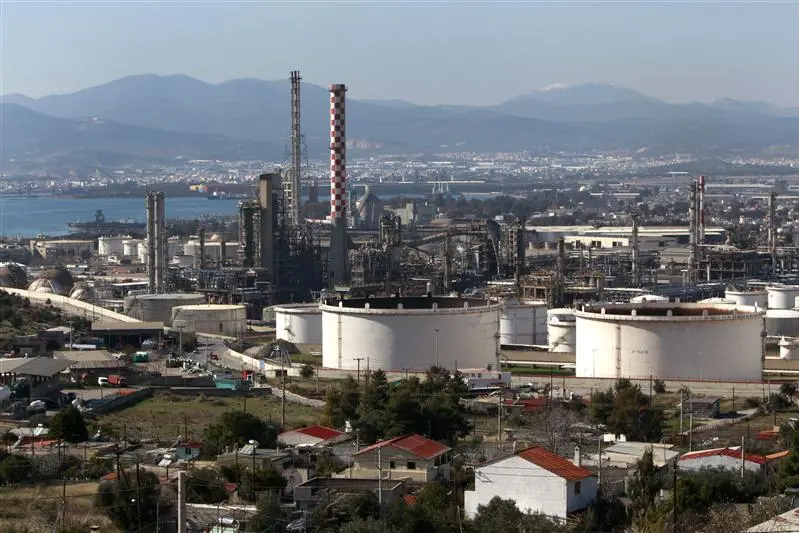PHOTO
Image used for illustrative purpose. A general view of the Hellenic Petroleum refineries is seen at Aspropyrgos town. John Kolesidis, Reuters
LAUNCESTON, Australia - China is both the problem and the solution to the energy transition, given the outsized role it plays in the consumption of fossil fuels and the production and deployment of renewable technologies.
The International Energy Agency (IEA) said in its World Energy Outlook 2023 report released on Tuesday that China is reaching an inflection point and its total energy demand is likely to peak around the middle of this decade.
This sounds like good news for the global environment as not only is China the world's second-biggest economy, it's also the largest polluter, being the biggest consumer of coal and the top importer of crude oil.
But the sheer scale of China's energy demand means that even though it's making vast strides to deploy renewables and electrify its vehicle fleet, it will still be consuming vast quantities of fossil fuels for decades to come.
The IEA report is effectively outlining a bet that China's economic growth will slow enough to curb energy demand, and that demand will be met by a rising share of cleaner energies, such as wind, solar and nuclear.
"In our scenarios, China's GDP growth averages just under 4% per year to 2030," the IEA said.
"This results in its total energy demand peaking around the middle of this decade, with robust expansion of clean energy putting overall fossil fuel demand and emissions into decline."
But even small variations in what China may or may not achieve have huge ramifications, as the IEA acknowledges.
"If China's near-term growth were to slow by another percentage point, this would reduce 2030 coal demand by an amount almost equal to the volume currently consumed by the whole of Europe," the report said.
"Oil import volumes would decline by 5% and LNG imports by more than 20%, with major implications for global balances."
The IEA report clearly sees more downside than upside risks to China's economic trajectory, but the real message is that even relatively small variations in China's economic growth are likely to result in big shifts in its energy demand profile.
China accounts for about one-third of global carbon dioxide emissions, releasing 12.1 gigatons in 2022, according to the IEA.
But in the same year China also accounted for 60% of global sales of electric cars, 45% of global solar capacity additions and 30% of new nuclear capacity, the IEA said.
It's also clear that for China to meaningfully lower its emissions that coal burning will have to fall away rapidly.
COAL PEAK
China consumes more coal that all other countries combined and the IEA said emissions from the fuel were 8.6 gigatons in 2022, or about 70% of the country's total and one-quarter of global energy emissions.
The IEA also notes that China is likely to keep adding to its coal-fired capacity up until 2030 given the number of plants under construction and approved.
Despite 100 gigawatts (GW) of coal generation being under construction and another 50 GW planned, the IEA believes that output from coal-fired power plants will peak around 2025 and then starts declining.
The IEA's thinking is that the average capacity factor of coal plants declines, dropping to just 40% in 2030 under the stated policies scenario, from around 53% in 2022.
"China will gradually use its coal-fired power more to provide flexibility and less to deliver bulk energy, though there is inevitably some uncertainty about the speed and degree of this shift," the IEA said.
In the above sentence the key word is "uncertainty," and much will depend on China maintaining momentum in shifting to renewables.
If China can achieve its renewable energy goals, and it's already on track to exceed its official target of 1,200 GW of solar and wind capacity by 2030, then it has significant implications for imports of fossil fuels.
The IEA expects coal imports to decline almost 30% by 2030, while crude oil imports increase up to 2030 and then decline as domestic demand goes from 16.6 million barrels per day (bpd) to just 12 million bpd in 2050 under the stated policies scenario.
Natural gas demand only peaks in 2040 at a level about one-quarter higher than currently, according to the stated policies scenario.
Despite the seemingly rapid shift to renewables, the IEA expects China will remain the largest consumer of fossil fuels in 2050.
This means that from a climate change perspective, encouraging and supporting China's energy transition is probably the most meaningful goal that can be achieved.
The opinions expressed here are those of the author, a columnist for Reuters.
(Editing by Sam Holmes)





















